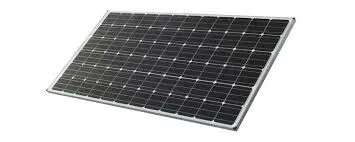price per solar panel
Understanding the Price per Solar Panel A Comprehensive Overview
The rise of renewable energy, particularly solar power, has significantly transformed the energy landscape around the globe. As more individuals and businesses recognize the benefits of harnessing sunlight for electricity, the demand for solar panels continues to increase. However, potential buyers often find themselves grappling with the critical question what is the price per solar panel? This article aims to explore the factors influencing the cost of solar panels and offers insights into budgeting for your solar installation.
Factors Influencing the Price of Solar Panels
1. Type of Solar Panels There are primarily three types of solar panels available on the market monocrystalline, polycrystalline, and thin-film. Monocrystalline panels, known for their high efficiency and space-saving design, usually come with a higher price tag, often ranging from $1 to $1.50 per watt. Polycrystalline panels are generally less expensive, costing around $0.70 to $1.00 per watt, but they are slightly less efficient. Thin-film panels, while the least expensive, are larger and require more space for installation. Understanding the types of solar panels and their corresponding costs is vital for making an informed decision.
2. Brand and Quality Just like any other product, brand reputation and quality play substantial roles in the pricing of solar panels. Established brands with proven track records in performance and durability may charge a premium. Investing in high-quality solar panels can lead to better long-term savings, as they often come with longer warranties and better efficiency ratings.
3. Installation Costs The initial purchase price of solar panels is only one aspect of the total cost of a solar energy system. Installation costs can vary widely depending on the complexity of the installation, the location of the building, and the installer’s labor costs. On average, installation costs can add anywhere from $500 to $2,000 to the overall price. It is essential to consider these costs when budgeting for your solar project.
4. Government Incentives and Rebates Many governments offer incentives, tax credits, or rebates to encourage the use of renewable energy. In the United States, the federal solar tax credit allows you to deduct a significant percentage of your solar system’s installation costs from your federal taxes. These incentives can effectively reduce the overall price you pay per solar panel, making it a crucial factor in your purchasing decision.
price per solar panel

5. Market Trends and Supply Chain The solar panel market is influenced by global manufacturing capacity, material costs, and market demand. For instance, fluctuations in the price of silicon, which is a primary material used in most solar panels, can directly impact the price per panel. Keeping an eye on market trends can help consumers identify the best time to purchase.
Budgeting for Solar Installation
When planning to invest in solar energy, it is crucial to establish a clear budget that includes all aspects of the solar installation process. Start by researching the prices of different solar panel types and brands. Obtain quotes from multiple installers to find competitive rates and ensure that you are aware of all additional costs, including those for permits and inspections.
Additionally, factor in potential savings from government incentives and rebates. A comprehensive approach to budgeting will not only provide clarity on the price per solar panel but also shed light on the overall financial commitment and potential return on investment from harnessing solar energy.
Conclusion
In conclusion, understanding the price per solar panel involves more than just looking at the sticker price. It requires an examination of various factors, including the type of panels, brand reputation, installation costs, and available incentives. By arming yourself with knowledge and doing extensive research, you can make a financially sound decision that will lead to sustainable energy savings for years to come. As solar energy continues to gain momentum, investing in solar panels represents not just a commitment to renewable energy, but also a strategic financial decision.
-
String Solar Inverter: The High-Efficiency Solution for Smart Solar EnergyNewsJul.14,2025
-
Revolutionizing Rooftop Energy with the Power of the Micro Solar InverterNewsJul.14,2025
-
Power Independence with Smart Off Grid Solar Inverter SolutionsNewsJul.14,2025
-
On Grid Solar Inverter: Powering the Future with Smart Grid IntegrationNewsJul.14,2025
-
Monocrystalline Solar Panels: High-Efficiency Power for the Future of Clean EnergyNewsJul.14,2025
-
Bifacial Solar Panel: A Smarter Investment for Next-Generation Energy SystemsNewsJul.14,2025







